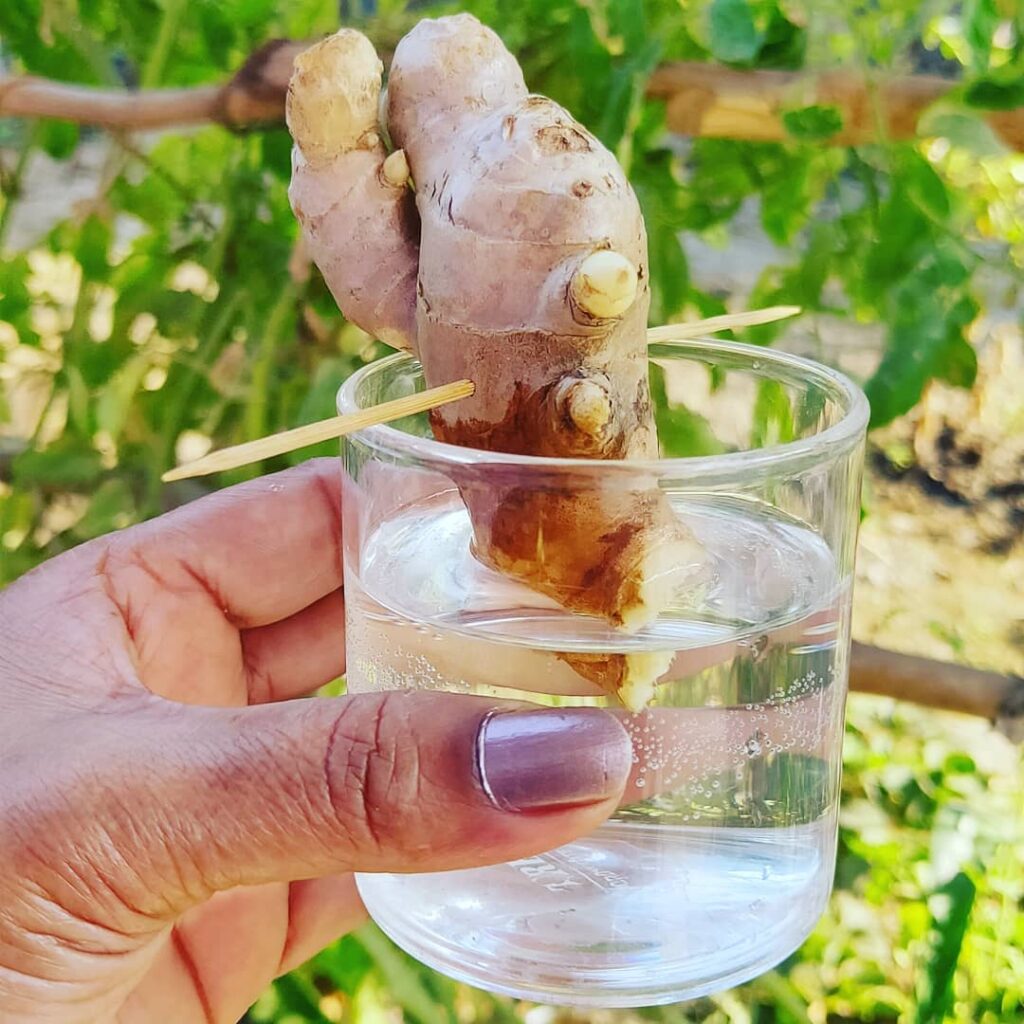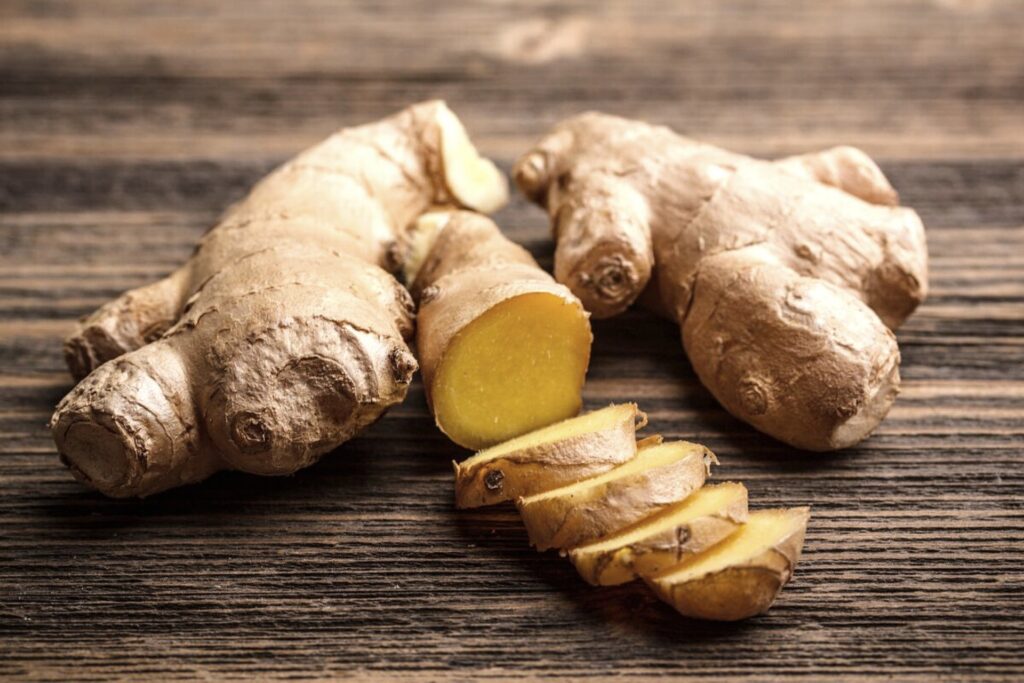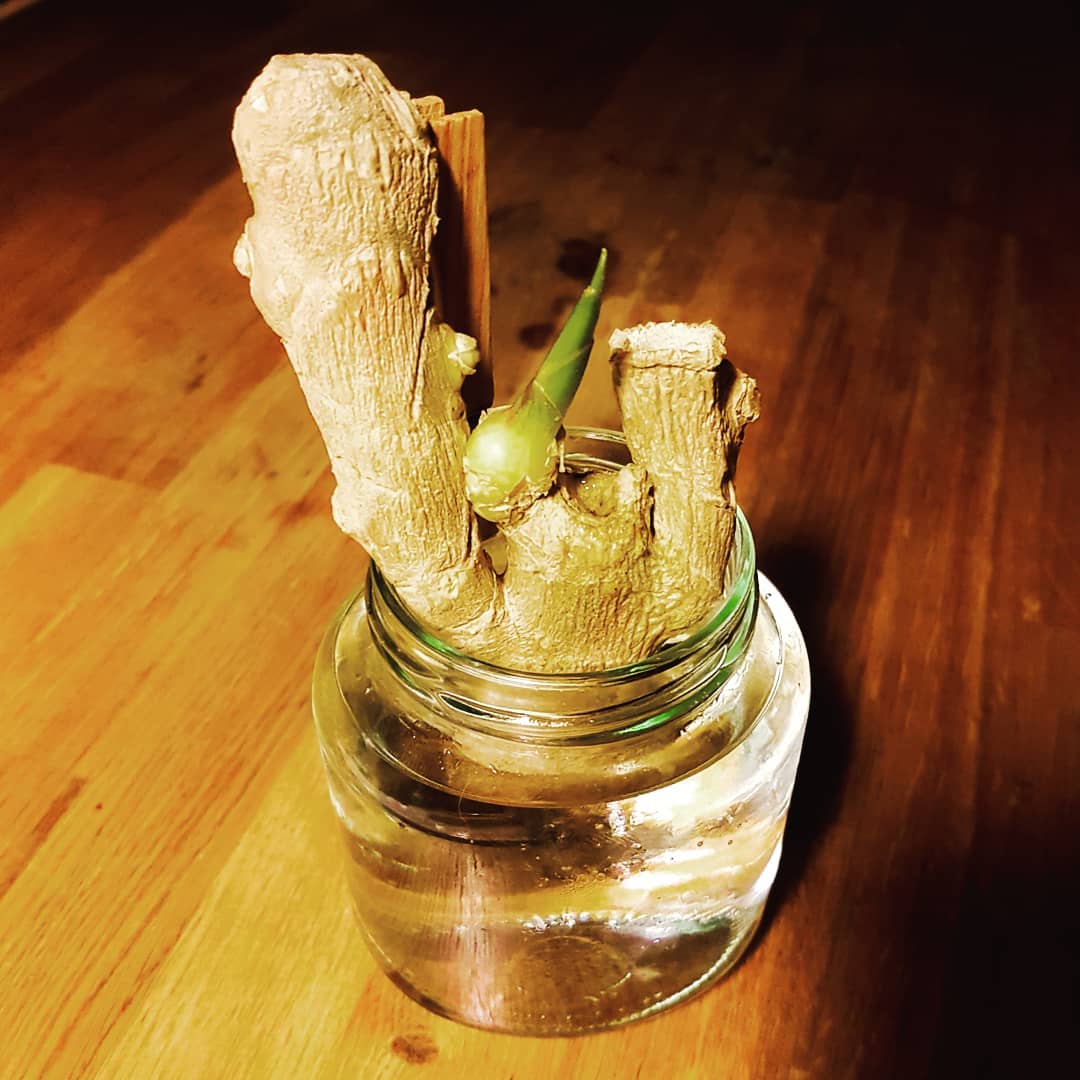You may have wondered here as an already adept hydroponic gardener. You may be thinking to yourself as to what other plants you may add to your clusters? Well, you’ve come to the right place, as in this article, we’ll be talking all about growing ginger hydroponically!

Technically speaking, the ginger itself is not a root but is instead a rhizome. As the plant grows, so do new rhizomes and from these rhizomes sprout up new leaves, and the cycle continues.
Ginger can be one of the most essential parts of your hydroponics garden. It is one of the oldest plants that humans have been growing since the agricultural era. Its roots began in South-East Asia and have since spread throughout the world.
It has uses both as medicine and culinary. It grows in rich fertile soils in warm climates that have high humidities.
If your climate does not describe these growing conditions, then you can mimic them and plant ginger with your hydroponics setup!
Growing ginger hydroponically may sound technical but it only actually involves a simple set-up. As an overview, the key steps in growing ginger rhizomes hydroponically is first root them in compost. Prepare the hydroponic set-up while the gingers are rooting.
Once they develop a robust root system, transfer them to the hydroponic containers and hook them to a well-balanced hydroponic nutrient solution.
Most people think that you can grow ginger in water, but it isn’t as simple as that, so let’s break it down so you can have your own healthy hydroponic ginger plant!
Getting To Know Ginger
Gingers, scientifically known as Zingiber officinale, are tropical and subtropical plants that come from the ginger family, Zingiberaceae. The majority of the ginger that makes its way to our markets and dinner tables was grown in West Africa, southern China, India, or Indonesia.

The ginger rhizome, which isn’t really a root but looks a lot like one, can be grown in large quantities as a commercial spice or even in backyard gardens. Even when planted as a garden perennial, it spreads extremely aggressively and thrives in these tropical climates.
It appears that ginger can thrive in some US gardens, but not all of them, as it only grows well in tropical and subtropical climates.
Does ginger grow in water?
The rhizome of the plant, not the root, is what is actually used when making ginger. A rhizome gives rise to tall, grass-like leaves. There are new rhizomes created as the plant grows.

As previously noted, the plant is typically grown in soil, but ginger does indeed grow in water. In actuality, water-based cultivation of ginger has benefits over conventional methods. Ginger plants can be grown hydroponically with less upkeep and in less space.
How do I go about growing ginger hydroponically?
Much like any other starter plant, growing ginger is not complicated. However, it also takes patients, tools, and a lot of tender loving care; just as you do so, your already established plants, whether or not they are grown hydroponically.
Here are the steps to grow ginger hydroponically:
1. Root your ginger rhizome in compost first
You might be thinking that you might need to root the ginger in water first. This isn’t the case, as ginger will almost always grow hydroponically for most of its life. What’s important here is that the rhizome gets to root in compost first before being moved to a hydroponic system.
Start first by cutting the rhizome into several 2-inch pieces, as previously mentioned, with at least one bud in each rhizome. Having multiple pieces ensures a higher chance of germination per piece. Next, fill a starter pot with some general-purpose compost.
Take your rhizome pieces and bury them roughly 1 inch below the topsoil. Water your starters regularly, and when stems and leaves begin to appear, you can start transplanting them.
2. Prepare your hydroponic system
While waiting for germination, you can start prepping your hydroponic system to receive the germinated gingers. To plan out your containers, make sure that each plant receives at least 1 square foot of growing space, and that your tray should be 4-6 inches deep.
3. Transfer your germinated ginger to the hydroponic system
Once your rhizomes have germinated, you can remove the sturdy ones from the soil and rinse off excess soil. Next, plant the ginger on top of the growing medium in the hydroponic container and evenly spread out its roots. Finally, place enough growing medium that it just covers the roots and keeps the plants in place, spacing each plant at least 1 foot apart.
4. Hook system to a hydroponic nutrient solution
Hook your system to your water source and set it so that your plants get to feed every 2 hours with a well-balanced hydroponic nutrient solution. You don’t need to go all out on this, any standard growing solution will work.
While doing so, regularly test for the fluid level pH and make sure it is between 5.5 and 8.0. Turn the growing lights on for 16 to 18 hours a day and let them rest for 6 to 8 hours.
If nothing goes wrong with your setup, then the plants will produce more rhizomes and new ginger plants. You can start harvesting ginger within the first four months. But, first, take the rhizomes, dry them, and store them in a clean and dry environment.
What are the benefits of growing ginger hydroponically as opposed to growing them traditionally?
As previously mentioned, growing hydroponic ginger plants actually allows you to mimic its native environment, allowing you to optimize its growth.

In line with this, hydroponic systems allow for faster growth as nutrition is almost always in contact with the plant as compared to soil. You also do not have to worry about seasonal changes, meaning you can harvest ginger all year round.
Less Use of Pesticides and Herbicides (Hydroponics Ginger)
Since we’re also trying to spread a greener thumb, add to this that the need for herbicides and pesticides is decreased as compared to soil gardening. Since hydroponic farming doesn’t use soil, it also doesn’t require or utilize chemicals.
This gives you the ability to develop wholesome meals over time. Your safety is always prioritized, and this is never compromised.
Less Use of Water Resource (Hydroponics Ginger)
Comparing plants grown in a hydroponic system to those cultivated in a regular field, the hydroponic plants need only 10% of the water. Because here, unlike in typical farming, water is recycled or recirculated, the amount of water utilized is far lower.
Water is absorbed by plants to meet their needs, and any extra water is caught and re-introduced into the system. Therefore, there are only two relevant ways that water might be lost: through evaporation and through system leaks.
That being said, a successful hydroponic system will eliminate leaks or at least decrease them.
80% of groundwater and surface water in the US is thought to be used by agriculture. Given the increased need for food production and the essential issue of water, hydroponics is seen to be a great way to solve this problem.
Space-Saver (Hydroponics Ginger)
Gardening land is also in short supply. So if you’re someone who doesn’t have acres of land, someone with a smaller backyard, or someone who lives in the city, then hydroponics can be the perfect solution for you.
In addition, since most hydroponic gardens can also be grown vertically, you can rest assured that every inch of your space is utilized for maximizing plant growth.
Ultimate control on temperature, light, humidity, and air (Hydroponics Ginger)
Finally, unlike traditional gardening in soil, hydroponics allows for ultimate control from temperature, humidity, sunlight, and even air composition! This opens up virtually limitless possibilities for growing any kind of plant.
Hopefully, we’ve convinced you to start exploring hydroponics gardening! No better way to start than with ginger, as it is one of the easier plants you can grow.
Optimal usage of nutrients (Hydroponics Ginger)
You have complete control over the nutrients that the plants need when using hydroponic systems. You can determine the types of nutrients your plants need even before you start farming, and at certain stages, you can combine specific amounts of those nutrients with water.
Nutrient loss is not possible because the nutrients are properly stored in tanks.
Relatively Faster Growth Rate (Hydroponics Ginger)
Faster growth is another significant advantage of the hydroponic method. Here, the environment necessary for the growth of the plants is completely under your control.
That implies that you have control over all variables, including temperature, ambient light, moisture, and—most crucially—nutrients. The plants will be kept in the best possible conditions, and enough nutrients will be offered so that they can reach the roots directly.
In this approach, plants may almost totally concentrate on surviving and increasing the production of fruits rather than wasting their precious energy searching for diluted nutrients sunk deep within the soil.
No weed problem (Hydroponics Ginger)
Weeds can be really inconvenient if you’ve ever attempted doing traditional gardening (with dirt). One of the most taxing duties for growers or gardeners is trimming weeds. The operation of tilling, plowing, and hoeing appears to go on forever.
When it comes to soilless hydroponic farming, you won’t have to bother with weeds any longer because they are solely related to soil.
Are there any specific hydroponic systems and growing conditions that I should follow? (Hydroponics Ginger)
Any hydroponic system of your choosing should work just as fine as any other. However, if you want to maximize your harvest, we believe that drip hydroponics will provide the best outcomes for your ginger plants.

Aside from this, you can also plant your ginger along with other heat-loving plants such as tomatoes, capsicum, cucumbers, melons, and fruiting plants because they will all have similar nutrient and climate requirements.
Then, when your ginger matures (i.e., when they already have 2 to 3 leaves), you can increase your light levels to full strength with similar intensities as other high-light crops.
Day length is not something you should worry about for these plants, but they need a little warmth since they still come from the tropics. Keeping your temperature at a cozy 72-86 degree Fahrenheit will keep your ginger plants happy and thriving.
Troubleshooting pests for your ginger hydroponics
The best way to treat diseases and pests is to catch them at their earliest stages, as when they progress further to their later stages, then it’s probably too late. Look for the presence of insects, chewed plant leaves, and foliar diseases such as spots.
One diseased plant is all it takes for it to start infecting others. So remove any sickly-looking plant immediately from your hydroponics system.
RELATED: What Is Eating My Rhubarb Leaves? Learn About The Evil Offenders Involved!
Hydroponic ginger can actually be quite hardy to mold. Since you’re growing them hydroponically under a roof, they are less exposed to rain which lessens their chances of acquiring leaf fungus, mildew, or molds. Despite being more hardy to diseases, they still need to fend off pests.
Pick off any bugs you might see, such as caterpillars and bugs.
Under optimal growing conditions, which you will most likely easily achieve, you will less likely face common exotic plant problems such as root rot or dieback. However, they will be more prone to in-house pests such as fungus gnats, mites, thrips, and whiteflies.
Treatment of such pests begins with early identification, and you can easily treat them with neem oil or any mild organic pesticidal soap. You can also incorporate integrated pest management with introduced predators and parasite insect controls to minimize pest problems.
Is eating sprouted ginger safe?
Some of you might be wondering if it is safe to eat sprouted ginger! Well, it does not produce toxins the same way that sprouted potatoes do. However, the drawback is that the sprouted ginger won’t offer the same nutritional value as that of fresh ginger.
This is because the growing ginger usually wilts out as it grows. This wilted ginger is still safe to consume, but it won’t be as nutritionally dense and as fresh-tasting as that of fresh ginger. As the ginger ages, it shrivels and also loses a lot of its nutritional value and aromatic compounds.
Can I plant a sprouted ginger root? (Hydroponics)
Not only can you plant this form of ginger, but it is actually one of the most ideal ways to get your ginger plant up and started! Most gardeners will say that the harvest is actually bountiful if you plant a ginger rhizome that has already sprouted!
So, before planting, make sure to cut up your ginger rhizome into roughly 2-inch pieces so that it has multiple “eyes” it can grow from. The sprouted ginger cut in pieces will give you more ginger to harvest.
Final Thoughts
Anyone with just the right patience and the right loving can grow ginger, or any plant for that matter, hydroponically. You won’t even need a backyard or even a house to start getting yourself into hydroponics. This is the perfect solution for all you apartment dwellers and dorm settlers.
Here is a video of growing ginger hydroponically for you to augment your learning:
By following a few guides for a greener thumb, and following these steps, you may never even have to buy ginger from a store ever again. You may even be the one supplying these to your flatmates!
We hope you learned something from this article, here are other articles that you can learn from:
Top 25 Most Poisonous & Deadly Mushrooms Around The World







